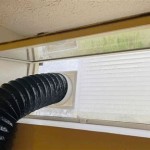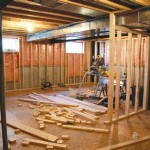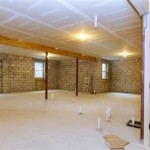What Is A Good Humidity For Your Basement?
Basements, often considered underutilized spaces, can be valuable additions to a home. However, they are susceptible to humidity, which can create various problems, such as mold growth, musty odors, and damage to belongings. Maintaining a suitable humidity level in your basement is crucial to prevent these issues and ensure a comfortable and healthy environment.
Understanding Humidity and Its Effects
Humidity refers to the amount of moisture in the air. Basements are particularly prone to high humidity due to their location below ground level. Moisture can seep in from the surrounding soil, poor ventilation, and even water leaks. High humidity levels can lead to several issues:
- Mold Growth: Mold thrives in warm, humid environments. High humidity levels provide the ideal conditions for mold spores to germinate and spread, leading to potential health hazards.
- Musty Odors: Excess moisture can contribute to the development of unpleasant musty odors in the basement, making it uncomfortable to use.
- Wood Rot and Damage: High humidity can cause wood to warp, rot, and deteriorate, affecting structural components and furniture.
- Increased Allergens: Damp basements can harbor dust mites, pollen, and other allergens, exacerbating allergies and respiratory problems.
Ideal Humidity Levels for Basements
While the ideal humidity level for a basement can vary depending on factors like climate and personal preferences, a general guideline is to maintain a relative humidity (RH) between 30% and 50%.
Below 30% RH: While generally considered too dry for most environments, this level can occur in cold climates or during the winter months. Low humidity can cause static electricity and dryness, leading to discomfort.
Above 50% RH: This range increases the risk of mold growth, musty odors, and other humidity-related problems.
Tips for Managing Basement Humidity
Several strategies can help effectively manage basement humidity:
- Proper Ventilation: Ensure adequate ventilation in the basement by opening windows when possible, using exhaust fans, and installing a whole-house ventilation system.
- Dehumidifier Use: Invest in a dehumidifier to remove excess moisture from the air. Choose a model that is appropriately sized for your basement space.
- Addressing Moisture Sources: Identify and address any sources of moisture leaks, such as leaky pipes, cracks in the foundation, or poor drainage.
- Moisture-Resistant Materials: Use moisture-resistant materials for flooring, walls, and insulation.
By implementing these strategies, you can maintain a comfortable and healthy environment in your basement, preventing problems related to high humidity and ensuring its optimal use.

How To Achieve An Ideal Basement Humidity Of 30 50

How To Achieve An Ideal Basement Humidity Of 30 50

Dehumidifier Setting Chart What Should Be Set At

What Is The Ideal Basement Humidity Level Epp Foundation Repair

How To Achieve An Ideal Basement Humidity Of 30 50

The Ideal Humidity Level For Your Basement Reliable Waterproofing

Here Is The Ideal Humidity For Your Finished Basement

Ideal Basement Humidity And How To Achieve It Epp Foundation Repair

How To Lower Your Basement S Humidity Level

What Should A Basement S Humidity Be
Related Posts







